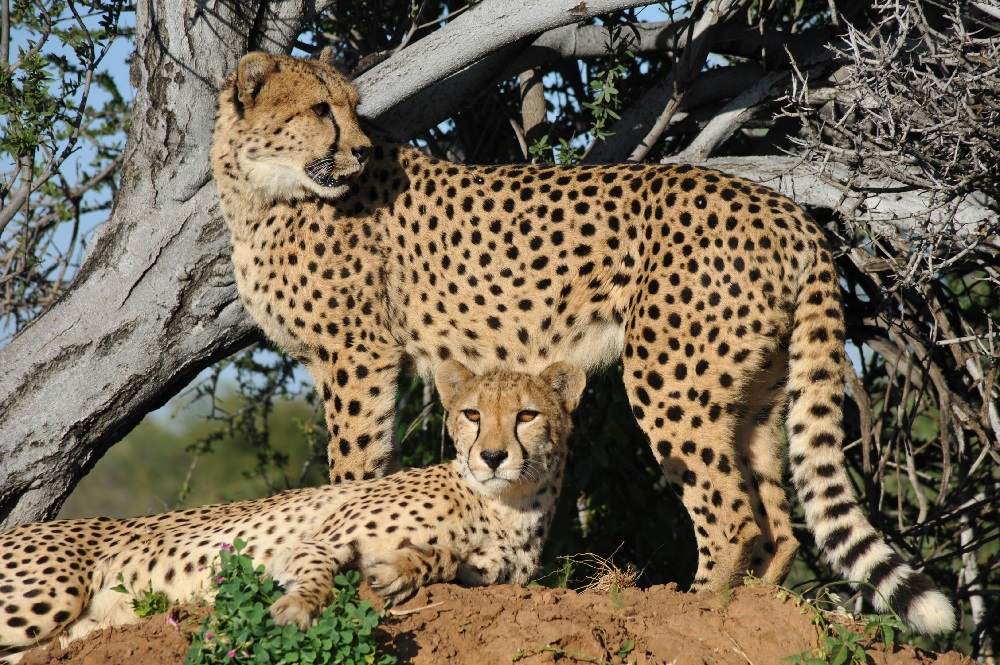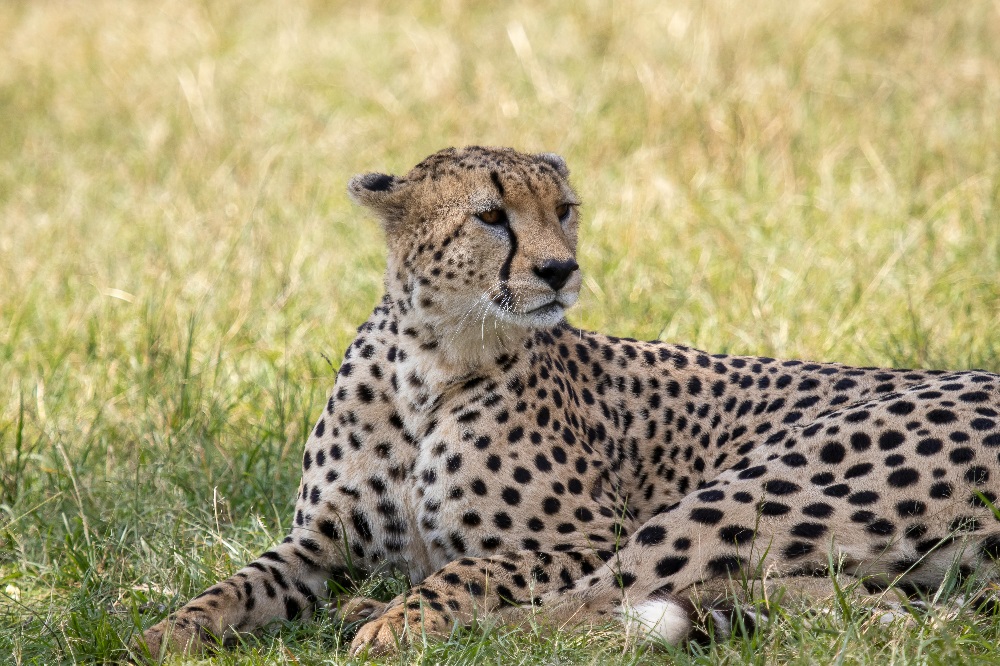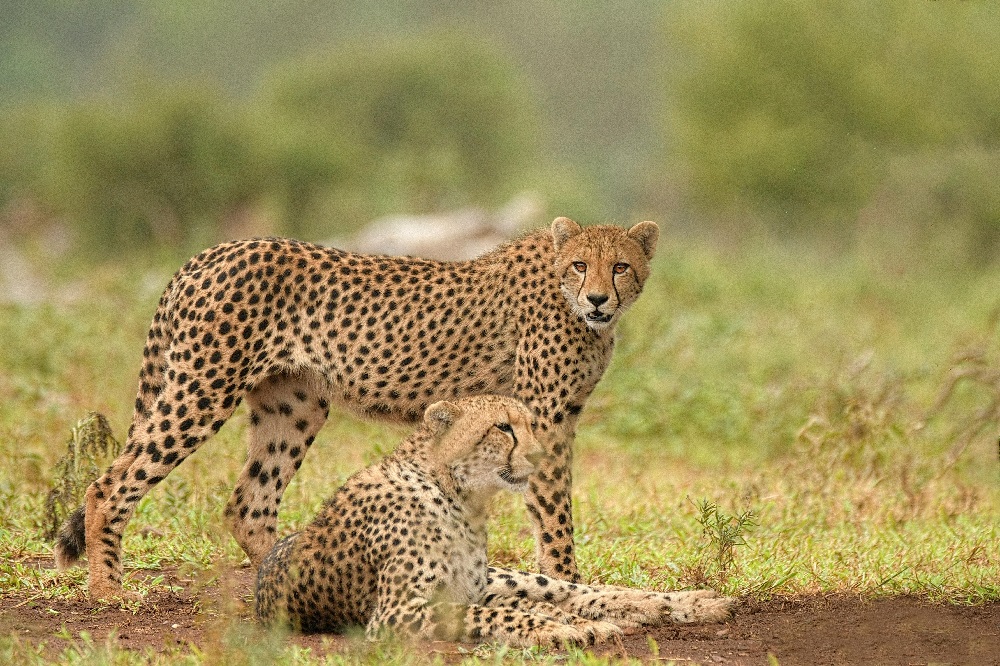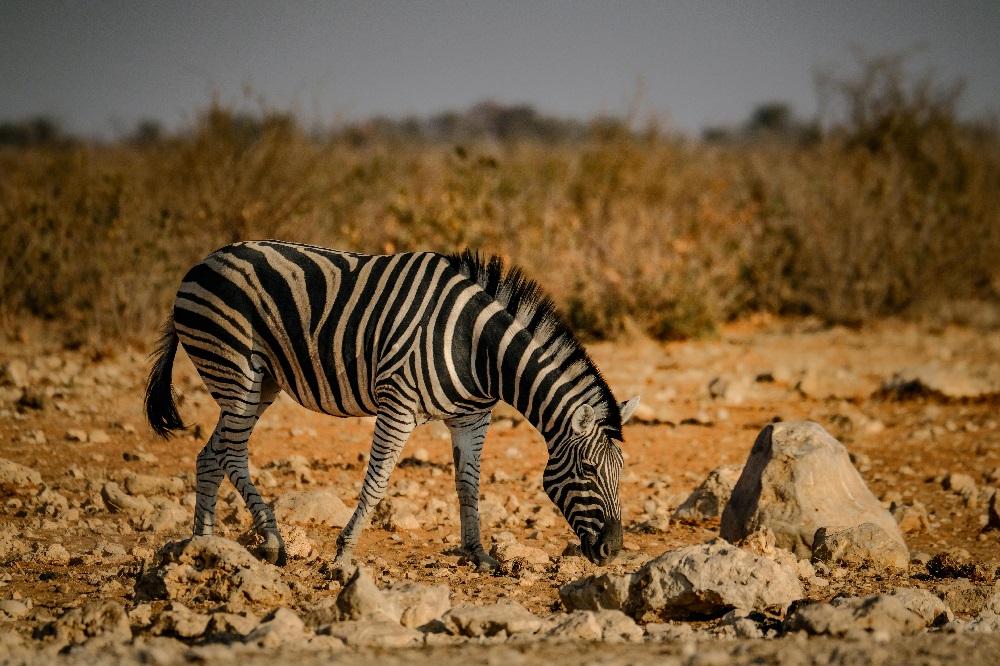The Masai Mara is one of the most famous safari destinations in the world, and many people dream of visiting it at least once in their lifetime. One of the first questions travelers ask is about the best month to visit. The truth is that the Masai Mara is a great safari location all year round because it has rich wildlife and beautiful landscapes that stay exciting in every season. However, the very best months are usually between July and October when the Great Migration happens. During this time, millions of wildebeest, zebras, and gazelles cross from the Serengeti in Tanzania into the Masai Mara in Kenya, creating one of the most spectacular wildlife events on earth. The drama of crossing the Mara River, where crocodiles lie in wait, adds to the thrill of the experience. These months are often considered the peak season, and many people plan their safari around this event.
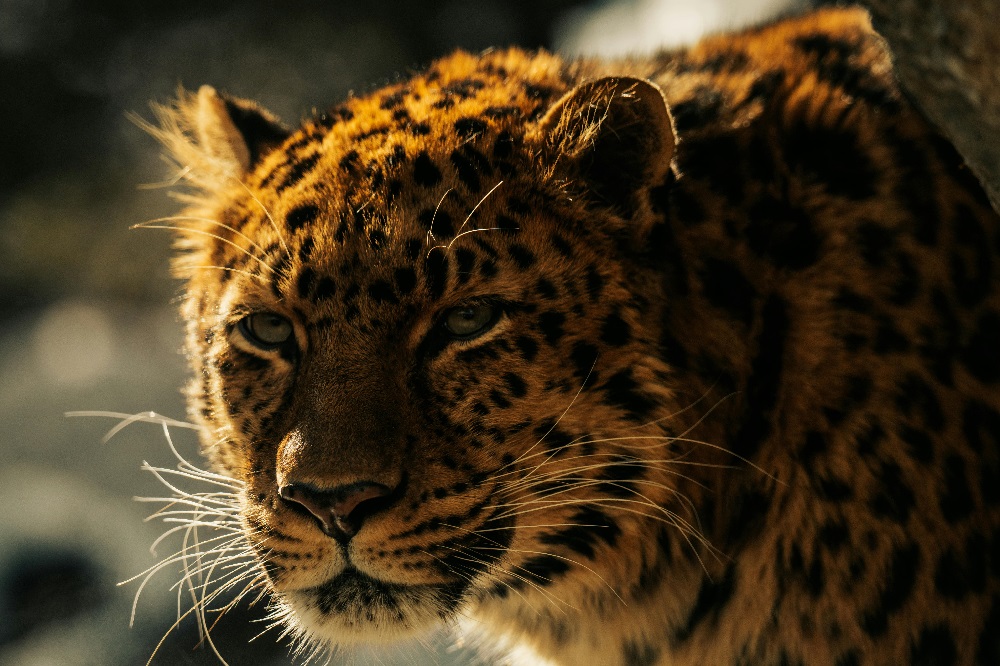
If you visit outside of the migration months, the Masai Mara still offers an amazing safari. From November to June, you will find fewer tourists, greener landscapes, and plenty of predators like lions, leopards, and cheetahs hunting in the open plains. The rains in April and May make the park more lush, and it can be a peaceful time to visit. So while July to October is best for migration lovers, other months also have their own charm. The answer really depends on what you want to see, but the Masai Mara will not disappoint in any season.
Is Masai Mara Better than Serengeti?
The Masai Mara and the Serengeti are two sides of the same ecosystem, but they belong to two different countries. The Serengeti is in Tanzania, while the Masai Mara is in Kenya. Both are incredible safari destinations and choosing between them is not easy. The Serengeti is larger, with vast open plains that seem endless, while the Masai Mara is smaller but more concentrated with wildlife. Because of this, many people say the Masai Mara offers easier sightings of animals, especially the big cats. Lions are almost guaranteed, and leopards and cheetahs are also commonly seen.
The Serengeti, however, gives a sense of wide open wilderness that feels untouched and truly wild. It also hosts the longer part of the Great Migration since the herds spend most of the year in Tanzania before moving into Kenya. Some travelers prefer the Serengeti for its size and variety, while others like the Masai Mara for its higher chances of close encounters with wildlife. In truth, both parks are amazing, and many safari lovers try to combine the two in one trip to get the best of both worlds. If you only have time for one, the Masai Mara is often easier to access from Nairobi and offers a more compact but equally breathtaking experience.
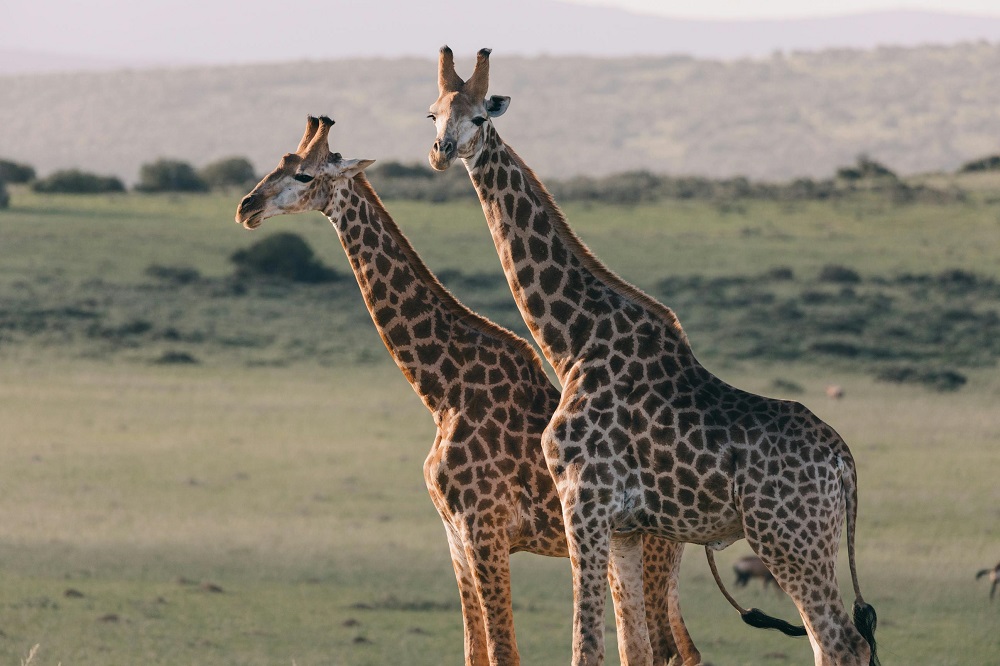
How Many Days is Enough in Masai Mara?
Deciding how many days to spend in the Masai Mara is an important part of planning your safari. Many people wonder if two or three days will be enough, while others consider staying for a week. The answer depends on your budget, your travel time, and what you want to see. Generally, three to four days in the Masai Mara is considered ideal. This gives you enough time to go on several game drives, explore different parts of the reserve, and increase your chances of seeing the Big Five, which are the lion, leopard, buffalo, elephant, and rhino.
If you only stay for two days, you may still see a lot, but it might feel rushed, especially if you want to relax and enjoy the scenery. Longer stays of five to seven days are perfect for people who want a deeper experience. With more time, you can visit less crowded areas, go on a balloon safari at sunrise, and enjoy the quiet beauty of the African bush. Spending more days also allows you to rest between game drives, making the trip less tiring. In the end, the Masai Mara is not just about ticking animals off a list; it is about feeling the rhythm of the wild. The longer you stay, the more connected you become to the magic of the place.
Which is Cheaper, Serengeti or Masai Mara?
When planning a safari, cost is an important factor. Both the Serengeti and the Masai Mara are world-class destinations, but there are differences in their pricing. The Serengeti, being larger and requiring longer drives or domestic flights to reach, can often be more expensive overall. Park fees in Tanzania are also generally higher than in Kenya, and accommodations may add to the cost because of the distances and logistics involved.
The Masai Mara is easier to access, especially if you are flying into Nairobi. A drive from Nairobi to the reserve takes about five to six hours, while flights are shorter and convenient. Because of this, the Masai Mara is usually the cheaper option for most travelers. However, both places offer a wide range of accommodations, from budget campsites to luxury lodges, which means you can plan according to your budget. If you want to save money but still experience a top safari, the Masai Mara is often the better choice.
What is the Coldest Month in Masai Mara?
The Masai Mara enjoys a fairly mild climate throughout the year, but it does have cooler months. The coldest months are usually June and July, which are part of Kenya’s winter season. During these months, temperatures can drop to around 10°C (50°F) at night and early morning, while daytime temperatures stay pleasant at around 23°C (73°F). Because game drives often start very early in the morning, travelers are advised to carry warm clothing like jackets, hats, and scarves to stay comfortable.
Even though mornings and evenings are chilly, the days warm up quickly, and the bright sun makes it comfortable. These months are also part of the dry season, which means animals are easier to spot as they gather around rivers and waterholes. So while June and July may be the coldest, they are also excellent months for safaris. For many visitors, the cool weather actually makes the safari more enjoyable compared to the hotter months.
Which is Better, Kruger or Masai Mara?
Another common comparison is between the Masai Mara in Kenya and Kruger National Park in South Africa. Kruger is one of the largest and most famous parks in Africa, known for its wide variety of wildlife and excellent infrastructure. Unlike the Masai Mara, Kruger has tarred roads, rest camps, and even self-drive options, making it more accessible to different types of travelers. Kruger also has a very high population of animals, including all of the Big Five.
The Masai Mara, on the other hand, is smaller but feels wilder and less developed. It offers a more classic safari experience, with open plains and rolling grasslands that seem to go on forever. The Masai culture also adds a special cultural element to the trip. Many people say the Mara feels more natural and authentic, while Kruger is easier for families and first-time travelers because of its facilities. Both parks are outstanding, but if you want the pure, traditional safari feel, the Masai Mara often wins. If you want comfort, convenience, and variety, Kruger may be the better choice.
Is Masai Mara Safari Worth It?
When travelers think about going on safari, the Masai Mara often comes up as one of the top choices. But many people ask if it is really worth the money and time. The answer is a big yes. The Masai Mara is world-famous for its incredible wildlife and breathtaking landscapes. It is one of the best places in Africa to see lions, elephants, giraffes, zebras, and many other animals in their natural environment. The Great Migration, which happens between July and October, is another reason why the Mara is so special. Watching thousands of wildebeest and zebras run across the open plains or cross the crocodile-filled Mara River is something you will never forget.
What makes the Masai Mara even more worth it is how close the animals are. You don’t have to drive for hours before seeing something exciting. In many cases, you may spot lions hunting or elephants walking past within minutes of starting your game drive. The scenery itself is stunning, with golden grasslands, acacia trees, and colorful sunsets that look like paintings. Many visitors also say the experience of staying in safari camps, listening to lions roar at night, and waking up to the sound of birds makes the trip magical. When you add the warmth of Kenyan hospitality and the chance to meet the Maasai people, the Masai Mara becomes more than just a safari; it becomes an unforgettable adventure.
Is It Better to Go to Masai Mara 2 or 3 Nights?
Choosing the right number of nights is important for enjoying your safari without feeling rushed. Some people wonder if two nights is enough, while others prefer three or even more. In general, three nights is better because it gives you more time to relax and explore. With three nights, you get at least two full days of game drives. This allows you to see more parts of the reserve and increases your chances of spotting rare animals like leopards or rhinos.
Two nights can still work, especially if you are short on time. It is possible to arrive one afternoon, go for an evening game drive, spend the full next day exploring, and then do a final drive before leaving. However, this pace can feel a little rushed, and you might miss out on the quiet moments of enjoying the wilderness. With three nights, you can spread things out, maybe try a hot air balloon safari, or even visit a Maasai village without worrying about time. For many travelers, three nights feels just right to balance adventure and relaxation, while longer stays are perfect for those who want to dive deeper into the magic of the Mara.
What Month Gives the Great Migration in Masai Mara?
The Great Migration is one of the most famous wildlife events in the world, and the Masai Mara plays a big part in it. Every year, more than a million wildebeest, zebras, and gazelles travel from Tanzania’s Serengeti into Kenya’s Masai Mara in search of fresh grass and water. This movement usually happens between July and October. During these months, the herds cross the Mara River, and this is often the highlight for visitors. The crossings are dramatic, with animals leaping into the river while crocodiles wait to catch them. On the other side, lions and hyenas are also ready, making it one of the most thrilling natural events to witness.
Although the exact timing changes each year depending on rainfall and grass growth, August and September are usually the peak months for river crossings. Visiting during these months almost guarantees you the chance to see this unforgettable spectacle. However, the migration is not the only reason to go. Even outside these months, the Masai Mara is full of wildlife. But if your dream is to see the Great Migration, planning your trip between July and October is the best choice.
Do Indians Need a Visa for Masai Mara?
Since the Masai Mara is in Kenya, all international travelers must follow Kenya’s entry requirements. For Indian travelers, a visa is required to enter Kenya. The good news is that the process is simple and can be done online. Kenya offers an electronic visa (e-visa) system, which allows Indian citizens to apply before traveling. The visa usually takes a few days to process, and you just need to show the approved document when entering Kenya.
The tourist visa normally allows you to stay for up to 90 days, which is more than enough for a safari in the Masai Mara. Besides the visa, travelers should also have a valid passport with at least six months before expiry. It is always good to check the latest updates before traveling, as rules can sometimes change. Once you have the visa sorted, you can look forward to your safari adventure without worry. Kenya is very welcoming to Indian travelers, and many tour operators in the Masai Mara are used to hosting guests from India.
Which Month is Best for Safari in Kenya and Tanzania?
Both Kenya and Tanzania are top safari destinations, and many people like to combine them in one trip. The best months for safari in these countries depend on what you want to see. For the Great Migration, the best time is between July and October when the herds move into the Masai Mara in Kenya. In Tanzania, the migration can be seen in the Serengeti earlier in the year, usually from January to March in the southern Serengeti where calving happens, and from May to June when the herds move north.
For general safari experiences, the dry seasons are usually the best. In Kenya, this means January to March and July to October. In Tanzania, it is similar, with dry months making it easier to spot animals as they gather around waterholes. During the rainy seasons, from April to May and November, the parks are greener and less crowded, but spotting animals can be harder because the grass is taller. So, the best months for safari in both countries are usually the dry ones, with July to October being the most popular for those wanting to see the migration.
How Many Days Are Enough for Kenya?
When planning a safari in Kenya, travelers often wonder how many days they should spend in the country. The answer depends on what you want to do and see. If you only want to visit the Masai Mara, then three to four days may be enough. But Kenya has many other amazing parks like Amboseli, famous for elephants with Mount Kilimanjaro in the background, and Tsavo, which is one of the largest parks in Africa. If you want a fuller experience, a safari of 7 to 10 days is ideal.
This amount of time allows you to explore different parks, enjoy a variety of landscapes, and see many types of animals. It also gives you time to relax and not rush between destinations. For travelers who want to add a beach holiday in Mombasa or Diani after their safari, spending 10 to 14 days in Kenya is even better. The country has so much to offer that the more days you have, the richer your experience will be. But if you are short on time, even a few days in the Masai Mara will still give you memories to last a lifetime.
Where to Stay in Masai Mara National Park?
Accommodation is a big part of any safari, and the Masai Mara offers a wide range of choices to fit different budgets and styles. You can find everything from simple campsites to luxury lodges that provide five-star service in the middle of the wild. For budget travelers, there are tented camps and basic lodges that still give you the chance to enjoy the safari experience without spending too much. These are often located near the main gates and are perfect for shorter stays.
For those looking for more comfort, mid-range lodges and tented camps offer en-suite bathrooms, comfortable beds, and good meals, while still keeping you close to nature. Luxury lodges take the experience to another level, with spacious tents, private decks, swimming pools, and even spas. Many of these lodges are located in prime areas where animals can be seen right from your room. Some even offer private game drives for guests who want a more personalized experience. No matter where you choose to stay, the thrill of sleeping in the African bush, surrounded by sounds of wildlife, makes the Masai Mara an unforgettable place.



